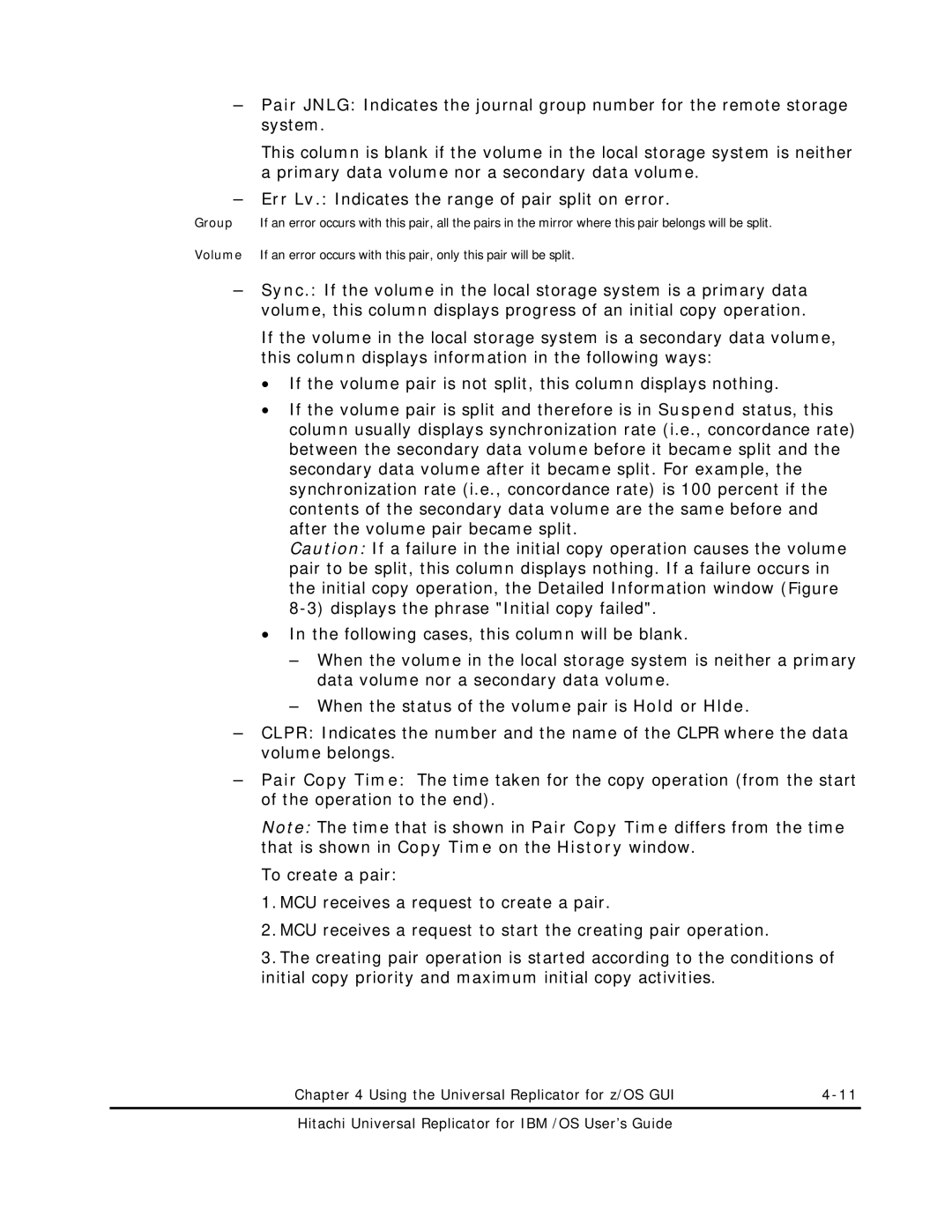–Pair JNLG: Indicates the journal group number for the remote storage system.
This column is blank if the volume in the local storage system is neither a primary data volume nor a secondary data volume.
–Err Lv.: Indicates the range of pair split on error.
Group If an error occurs with this pair, all the pairs in the mirror where this pair belongs will be split. Volume If an error occurs with this pair, only this pair will be split.
–Sync.: If the volume in the local storage system is a primary data volume, this column displays progress of an initial copy operation.
If the volume in the local storage system is a secondary data volume, this column displays information in the following ways:
•If the volume pair is not split, this column displays nothing.
•If the volume pair is split and therefore is in Suspend status, this column usually displays synchronization rate (i.e., concordance rate) between the secondary data volume before it became split and the secondary data volume after it became split. For example, the synchronization rate (i.e., concordance rate) is 100 percent if the contents of the secondary data volume are the same before and after the volume pair became split.
Caution: If a failure in the initial copy operation causes the volume pair to be split, this column displays nothing. If a failure occurs in the initial copy operation, the Detailed Information window (Figure
•In the following cases, this column will be blank.
–When the volume in the local storage system is neither a primary data volume nor a secondary data volume.
–When the status of the volume pair is Hold or Hlde.
–CLPR: Indicates the number and the name of the CLPR where the data volume belongs.
–Pair Copy Time: The time taken for the copy operation (from the start of the operation to the end).
Note: The time that is shown in Pair Copy Time differs from the time that is shown in Copy Time on the History window.
To create a pair:
1. MCU receives a request to create a pair.
2. MCU receives a request to start the creating pair operation.
3. The creating pair operation is started according to the conditions of initial copy priority and maximum initial copy activities.
Chapter 4 Using the Universal Replicator for z/OS GUI |
